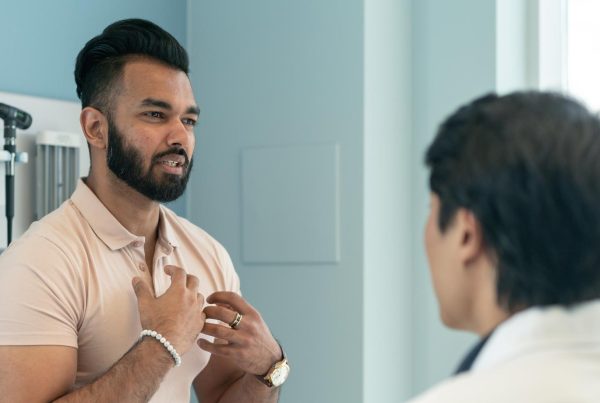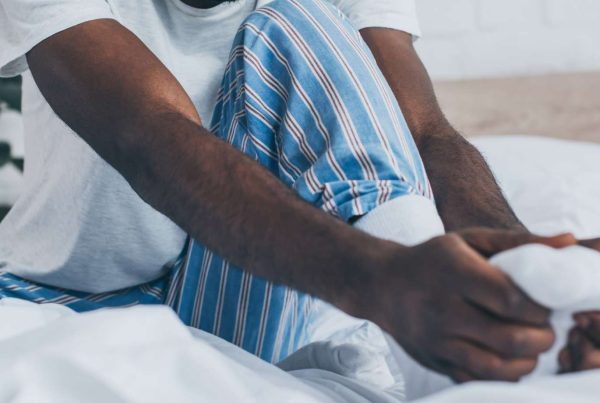Now is the time for you to schedule (or reschedule) that appointment that’s been on hold for the past few weeks.
Doctor’s offices and hospitals are resuming regular services and are prepared for your visit, says David Kuentz, MD, an Internal Medicine/Pediatrics physician at the MetroHealth Middleburg Heights November Family Health Center.
“People are worried that all of us on the front lines are overwhelmed, and they don’t want to overburden us,” he said. “Some patients are afraid to come in of fear that they’re going to get sick.”
Any hesitation that you may have about seeing your doctor should be put aside, says Dr. Kuentz. Not only are added precautions in place to protect patients and staff from COVID-19, the expansion of telehealth services provides another option for patients. “The line between a face-to-face visit and a telehealth visit is blurring,” he says.
Dr. Kuentz has offered some advice on what to consider as you get ready to make your appointment, and how to decide if a face-to-face or telehealth visit is the right choice for you.
Download the telehealth vs. in-person visit infographic
Five Benefits of an In-Person Visit
- You want to get an annual physical exam. This exam focuses on prevention, with your doctor assessing your risk for conditions such as diabetes, heart disease and cancer. While it can be done at any age, it becomes more important as you get older.
- You would like to establish care with a new doctor to serve as your primary care provider or for specialty care.
A first-time visit is best done in person, because it makes it easier for a doctor and patient to establish a connection. With that in mind, though, “We understand that access for new patients is crucial,” says Dr. Kuentz. “To limit new patient visits to face-to-face may be preventing timely access for patients who feel uncomfortable coming to the office. In this case a new patient visit could be telehealth or video visit.”
- You need to schedule your annual Medicare wellness visit. This is a separate visit from your annual physical exam (which is not covered by Medicare). The visit focuses on developing or updating a personalized prevention plan based on your current health and risk factors.
Medicare wellness visits are usually done face-to-face, but more providers are beginning to do those visits virtually, says Dr. Kuentz. “The visit includes questionnaires, a health risk assessment as well as gathering of information, such hearing issues, vision concerns, risk of falls, memory trouble, or the need for a specialist referral that can easily be collected with a telehealth video visit if it’s more convenient for the patient.”
- You have a problem or diagnosed medical condition that requires an exam.
Have you been experiencing new pain in your chest or abdomen? You’ll probably need to be seen in person by a doctor, who may order an EKG, blood labs or other diagnostic tests.
Are you bothered by fatigue or generalized pain that doesn’t seem to go away? Chances are, your doctor will want you to come in for a physical exam and, possibly, other tests.
If you have been diagnosed with Type 1 or Type 2 diabetes, you’ll want to have your feet examined once a year (or every six months if you have Medicare Part B insurance).
- You need a procedure done, such as the removal of sutures or a breathing treatment. Procedures that require a provider’s hand-on care, can only be done on person.
If you talked to your doctor and a telehealth phone or video visit is a great option for your appointment, how should you prepare?
- Write down a list of items that you’d like to discuss with your doctor during the visit.
- Gather all the medications you’re taking, including their bottles and boxes, so you can review them with your doctor.
- If you have the tools at home to take your blood pressure, heart rate, oxygen level, temperature and weight, take those vitals before your visit and have them ready to share. And if you can take a photo of a rash or bruise that you’re worried about and send it to your doctor through MyChart, he or she will have more information at hand to decide whether you should see a specialist.
If your doctor orders blood work for you before your visit, have that done a couple days ahead of time so that your doctor has the results. And if you have time, you can review your results in MyChart before your appointment.
Haven’t signed up for MyChart yet? It’s easier than ever! Just visit our MyChart page.
Contributor:

David Kuentz, MD











